
Tunja: The Historical Heart of Colombia's Andes
Discover Tunja, Colombia: A city steeped in history, rich in culture, and set amidst the stunning Andes mountains. Explore colonial architecture, vibrant festivals, and local cuisine.
Tunja, the capital of the Boyacá department in Colombia, is a city rich in history and culture. Founded in 1539, Tunja is one of the oldest cities in Colombia and boasts a plethora of colonial architecture, charming cobblestone streets, and vibrant plazas. The city's historical significance is evident in its well-preserved buildings and landmarks, making it a treasure trove for history enthusiasts and architecture lovers alike. Located high in the Andes at an altitude of 2,820 meters (9,252 feet), Tunja offers breathtaking views of the surrounding mountains and valleys. The city's cool climate provides a refreshing escape from the heat of Colombia's lower altitudes. Visitors can explore the Catedral Basílica Metropolitana Santiago de Tunja, a stunning example of colonial-era church architecture, or walk through the historic Puente de Boyacá, where the Battle of Boyacá took place, marking a crucial victory in Colombia's fight for independence. Beyond its historical landmarks, Tunja is also a hub for cultural activities. The city hosts numerous festivals throughout the year, including the Festival Internacional de la Cultura, which showcases a variety of artistic expressions such as music, dance, and theater. The local cuisine is another highlight, with traditional dishes like 'mute boyacense,' a hearty soup made with meat, vegetables, and grains, offering a taste of the region's culinary heritage. Tunja's blend of history, culture, and natural beauty makes it a must-visit destination for travelers seeking an authentic Colombian experience.
Local tips in Tunja
- Altitude Awareness: Tunja is at a high altitude. Take it easy on the first day to acclimate and stay hydrated.
- Historical Walks: Wear comfortable shoes for exploring the cobblestone streets and historical sites.
- Local Cuisine: Don't miss out on trying 'mute boyacense' at a local eatery for an authentic taste of the region.
- Festival Season: Plan your visit around the Festival Internacional de la Cultura for a vibrant cultural experience.
- Weather Preparedness: The climate can be cool, so pack layers to stay comfortable.
Tunja: The Historical Heart of Colombia's Andes
Tunja, the capital of the Boyacá department in Colombia, is a city rich in history and culture. Founded in 1539, Tunja is one of the oldest cities in Colombia and boasts a plethora of colonial architecture, charming cobblestone streets, and vibrant plazas. The city's historical significance is evident in its well-preserved buildings and landmarks, making it a treasure trove for history enthusiasts and architecture lovers alike. Located high in the Andes at an altitude of 2,820 meters (9,252 feet), Tunja offers breathtaking views of the surrounding mountains and valleys. The city's cool climate provides a refreshing escape from the heat of Colombia's lower altitudes. Visitors can explore the Catedral Basílica Metropolitana Santiago de Tunja, a stunning example of colonial-era church architecture, or walk through the historic Puente de Boyacá, where the Battle of Boyacá took place, marking a crucial victory in Colombia's fight for independence. Beyond its historical landmarks, Tunja is also a hub for cultural activities. The city hosts numerous festivals throughout the year, including the Festival Internacional de la Cultura, which showcases a variety of artistic expressions such as music, dance, and theater. The local cuisine is another highlight, with traditional dishes like 'mute boyacense,' a hearty soup made with meat, vegetables, and grains, offering a taste of the region's culinary heritage. Tunja's blend of history, culture, and natural beauty makes it a must-visit destination for travelers seeking an authentic Colombian experience.
When is the best time to go to Tunja?
Iconic landmarks you can’t miss
Puente de Boyacá
Discover the historical significance and breathtaking beauty of the Puente de Boyacá, a national symbol of Colombia's fight for independence.

Plaza de Bolivar, Tunja
Explore the vibrant Plaza de Bolívar in Tunja, a cultural hub adorned with historical architecture and lively local markets in Colombia.
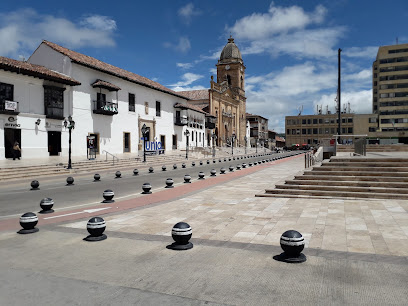
Plazoleta de las Nieves (Plaza de los Muiscas)
Explore Plazoleta de las Nieves in Tunja, a historic plaza filled with culture, local vendors, and stunning views of Colombia's beautiful landscape.

Water well Hunzahua (Donato)
Explore the Water Well of Hunzahua in Tunja, a historical monument that showcases Colombia's rich cultural heritage and architectural beauty.

Parque Pinzon
Explore the lush beauty and vibrant culture of Parque Pinzon, a serene park in the heart of Tunja, Boyacá, perfect for relaxation and recreation.
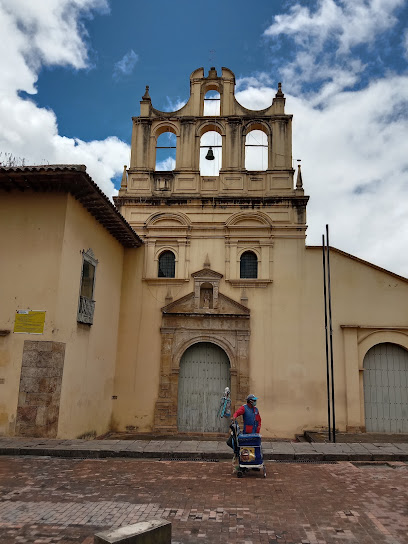
Bosque De La República
Explore the serene beauty of Bosque De La República in Tunja, a lush garden oasis perfect for relaxation, culture, and family fun.

Paramo Iguaque
Explore the breathtaking landscapes and unique ecosystems of Paramo Iguaque, a national park rich in biodiversity and cultural heritage in Boyacá, Colombia.
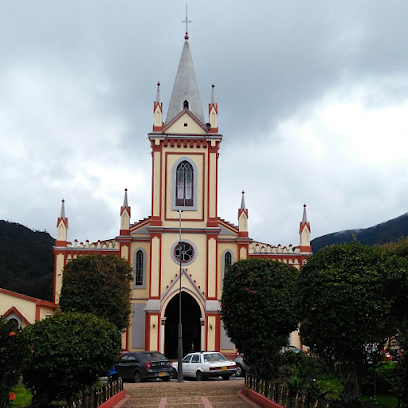
Cathedral Basilica of St. James the Apostle
Discover the architectural wonder of the Cathedral Basilica of St. James the Apostle in Tunja, a historic gem filled with cultural richness and spiritual significance.

Los Hongos
Discover the historical marvel of Los Hongos in Tunja, Boyaca, a monument celebrating Colombia's rich cultural heritage and breathtaking architecture.

San Agustin cloister
Discover the serene beauty and historical significance of San Agustin Cloister in Tunja, an architectural gem in Colombia's colonial heritage.

Casa del Fundador Gonzalo Suárez Rendón
Explore the Casa del Fundador Gonzalo Suárez Rendón, a vibrant art museum in Tunja, celebrating the rich cultural heritage of Boyacá.

Paredón de los Mártires
Discover the Paredón de los Mártires in Tunja, a historical monument symbolizing the resilience and spirit of Colombia's past.

Casa del Escribano Don Juan de Vargas
Uncover the rich colonial history at Casa del Escribano Don Juan de Vargas, an essential heritage museum in Tunja, Boyacá, Colombia.

Boyacá, Colombia
Explore Boyacá, Colombia, a vibrant artistic hub with stunning landscapes, rich culture, and exquisite craftsmanship waiting to be discovered.
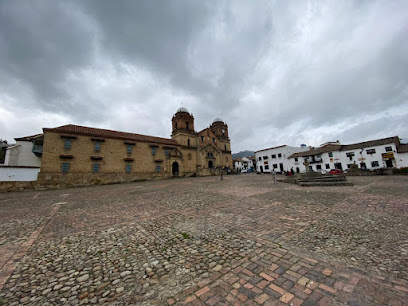
Glorieta del Gobernador
Explore Glorieta del Gobernador in Tunja – a historical landmark that encapsulates Colombia's cultural heritage amidst stunning landscapes.

Unmissable attractions to see
Villa de Leyva Main Square
Discover the enchanting Villa de Leyva Main Square, a historical landmark rich in culture, stunning architecture, and vibrant local life in Colombia's Boyacá region.

Plaza de Bolivar, Tunja
Experience the vibrant cultural heart of Tunja at Plaza de Bolívar, a historic square filled with rich architecture and local traditions.

Casa Terracota
Discover the breathtaking Casa Terracota in Villa de Leyva, a unique clay architectural masterpiece blending art and nature in Colombia.

Pozos Azules
Explore the stunning Pozos Azules in Villa de Leyva, a natural wonder with breathtaking blue lagoons and rich cultural heritage in Boyacá, Colombia.

Fossil
Explore Fossil in Villa de Leyva: an archaeological museum revealing the ancient history of Colombia through stunning fossil exhibits.

Gondava - The Great Valley of the Dinosaur
Explore Gondava, the Great Valley of the Dinosaur, a thrilling theme park in Boyaca that brings the prehistoric world to life with stunning exhibits and adventures.

Museo del Chocolate Villa de leyva
Explore the sweet world of chocolate at Museo del Chocolate in Villa de Leyva, a unique experience filled with history and delicious treats.

Plazoleta de las Nieves (Plaza de los Muiscas)
Explore the vibrant Plazoleta de las Nieves in Tunja, a cultural hub showcasing Colombia's rich heritage and lively community atmosphere.

Paleontological Research Center
Discover the rich history of our planet at the Paleontological Research Center in Villa de Leyva, where ancient fossils come to life.
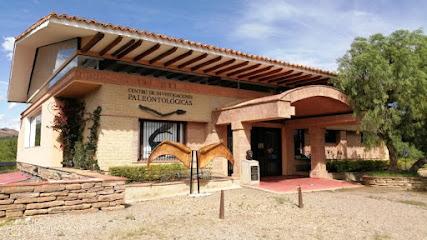
Water well Hunzahua (Donato)
Explore the Water Well of Hunzahua in Tunja, a captivating monument steeped in history and surrounded by stunning Colombian landscapes.

Casa Museo Antonio Nariño
Uncover the rich heritage of Colombia at Casa Museo Antonio Nariño in Villa de Leyva, a historic museum dedicated to the nation's first president.

Museo Paleontológico de Villa de Leyva
Explore the Museo Paleontológico de Villa de Leyva, a captivating natural history museum showcasing Colombia's rich fossil heritage and geological wonders.

Parque Pinzon
Explore the tranquil beauty of Parque Pinzon, a cultural oasis in Tunja, Boyacá, perfect for relaxation and family fun.

Recreacional de Tunja Park
Explore the natural beauty and vibrant cultural scene of Recreacional de Tunja Park, a perfect spot for relaxation and local experiences in Tunja, Boyacá.

Santo Ecce Homo Convent
Explore the historical charm and spiritual tranquility of Santo Ecce Homo Convent near Villa de Leyva, a serene escape into Colombia's rich heritage.
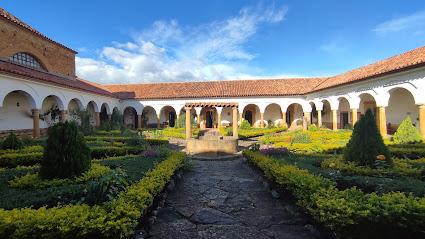
Essential places to dine
Cowfish Burgers & Sushi Tunja
Experience a delightful fusion of gourmet burgers and sushi at Cowfish Burgers & Sushi Tunja, where culinary creativity meets local flavor.

Presttigio Restaurante Rooftop
Indulge in gourmet cuisine while soaking in panoramic views at Presttigio Restaurante Rooftop in Tunja, Boyacá.
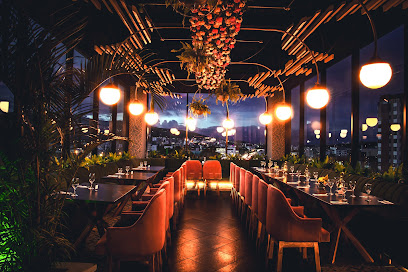
Tin Marín Parrilla Bar
Discover authentic Colombian flavors at Tin Marín Parrilla Bar in Tunja—where delicious grilled meats meet warm hospitality.

LA FABRICA
Experience authentic Colombian flavors at La Fabrica in Tunja – a vibrant restaurant where tradition meets culinary excellence.

Aminta Green Hills
Discover culinary excellence at Aminta Green Hills – where delicious coffee meets delectable pastries in the heart of Tunja.

Brasas De Oro
Discover the flavors of Colombia at Brasas De Oro in Tunja - where culinary excellence meets inviting ambiance.

Restaurante Mr. King
Experience authentic Colombian cuisine at Restaurante Mr. King in Tunja - where tradition meets flavor in every dish.

Madame Lili
Experience authentic Colombian flavors and international cuisine at Madame Lili in Tunja – a culinary treasure for every traveler.

Divino Restaurante
Discover the flavors of Colombia at Divino Restaurante in Tunja - where tradition meets contemporary cuisine.

La pezquera del norte mar y tierra
Experience the culinary delights at La Pezquera del Norte in Tunja, where land meets sea in every exquisite dish.
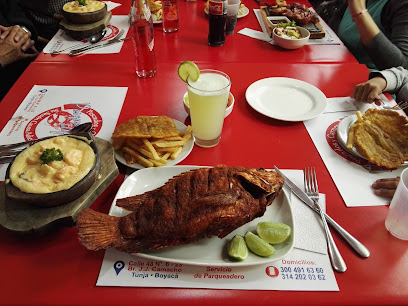
Restaurante Tierra Buena
Discover authentic Colombian cuisine at Restaurante Tierra Buena in Boyacá – where every meal tells a story.

CLANDESTINO CAFE LIBRO
Experience the unique blend of grilled delights and feline charm at Clandestino Cafe Libro in Tunja – perfect for foodies and cat lovers alike.

RESTAURANTE PROA
Discover exquisite flavors at Restaurante Proa in Tunja - where traditional Boyacense cuisine meets modern culinary artistry.

La Casa del Árbol
Discover La Casa del Árbol in Tunja – where gourmet burgers meet local flavors in a charming setting.

Mestizo Restaurante
Discover authentic Colombian flavors at Mestizo Restaurante in Tunja - a culinary journey through rich traditions and local ingredients.

Markets, malls and hidden boutiques
Centro Comercial Unicentro Tunja
Explore the dynamic Centro Comercial Unicentro Tunja, a shopping haven in the heart of Boyacá, featuring diverse stores, dining, and entertainment.

VIVA Tunja Mall
Discover the vibrant shopping and dining experience at VIVA Tunja Mall in Boyacá, where local charm meets contemporary retail.

Boulevard Shopping Center
Discover a vibrant shopping experience at Boulevard Shopping Center in Tunja, Colombia, offering diverse retail, dining, and entertainment options.

The Smokers Store
Explore The Smokers Store in Tunja for top-notch vaporizers and exceptional service, perfect for both beginners and seasoned vapers.

Fucsia Tienda de Detalles Tunja
Explore Fucsia Tienda de Detalles in Tunja for exquisite gifts, handcrafted chocolates, and vibrant balloons that capture the spirit of Colombia.
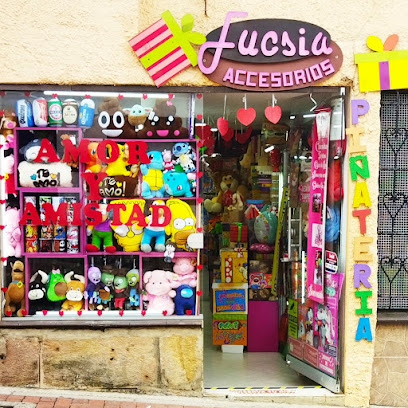
Milito
Explore Milito, Tunja's premier cigar shop, offering a rich selection of fine cigars in a welcoming atmosphere with expert guidance.

Martina fresa chocolate
Explore the exquisite world of artisanal chocolates at Martina Fresa Chocolate in Tunja, where every bite tells a story of Colombian craftsmanship.

La Rueka Tienda De Ropa
Discover unique styles and vibrant local fashion at La Rueka Tienda De Ropa in Tunja, a must-visit clothing store for stylish souvenirs.

Bundakú un mundo de regalos
Explore Bundakú, a unique gift shop in Tunja, offering handcrafted Colombian souvenirs and local artisan treasures for every traveler.

Converse TUNJA
Discover the latest in fashion and footwear at Converse TUNJA, where style meets comfort in the heart of Boyacá's vibrant shopping scene.

Anghelo
Discover unique gifts and local crafts at Anghelo, a charming gift shop in Tunja, Boyacá, showcasing the best of Colombian culture.

PRADOS
Explore Prados in Tunja for a unique shopping experience filled with local crafts and cultural treasures.

Regalos Sofiguz
Explore Regalos Sofiguz for unique local crafts and souvenirs that embody the artistic spirit of the region, perfect for tourists seeking meaningful gifts.

Alessia boutique Paseo de la Salamandra local 6 sotano abajo de las escaleras
Discover unique gifts at Alessia Boutique in Tunja, where local craftsmanship meets the charm of Boyacá's historic center.

Colombia Soy Yo
Discover the richness of Colombian craftsmanship at Colombia Soy Yo, a leading craft store in Tunja, Boyacá, where every piece tells a story.
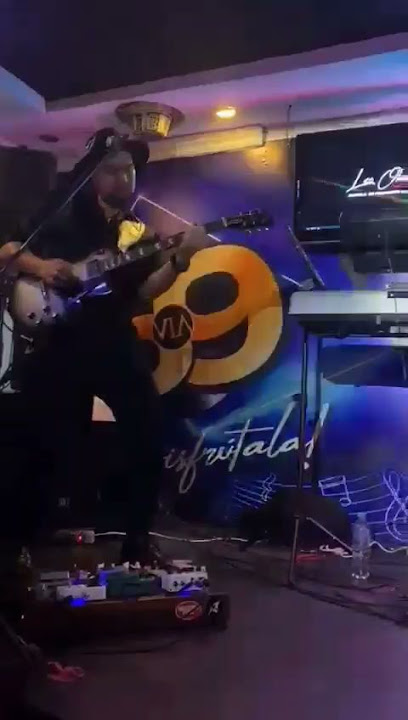
Essential bars & hidden hideouts
La Pacha Tunja
Discover La Pacha Tunja, a lively bar offering an unforgettable nightlife experience with great music, delicious drinks, and a vibrant atmosphere.

Classic Rock Café Tunja
Experience the vibrant nightlife of Tunja at Classic Rock Café, where darts meet live music and delicious bites in a lively atmosphere.

La Torralba
Discover the vibrant nightlife of Tunja at La Torralba, a lively bar offering a delightful mix of drinks and an inviting atmosphere.
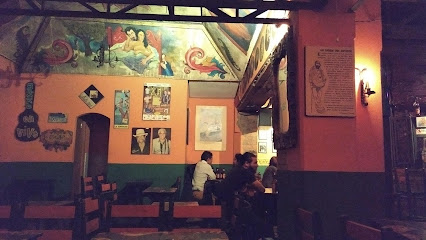
ASGARD PUB - ROCK
Dive into the heart of Tunja's nightlife at Asgard Pub - Rock, where live music and vibrant energy create unforgettable moments.

Beer Station - Tunja
Discover the vibrant grill scene at Beer Station in Tunja, offering delicious dishes and a wide selection of beverages in a welcoming atmosphere.

Bucks
Bucks Bar in Tunja: A lively gathering spot for locals and tourists, offering a diverse selection of drinks and vibrant nightlife experiences.

432 Hertz
Discover the vibrant atmosphere and tropical flavors at 432 Hertz, Tunja's premier cocktail bar and restaurant, perfect for all occasions.

Chicago Terraza Bar - CC Paseo de la Salamandra
Experience the vibrant nightlife at Chicago Terraza Bar in Tunja, where exquisite cocktails and a lively atmosphere await.

Entre Nubes Bar
Discover the vibrant nightlife of Tunja at Entre Nubes Bar, where excellent drinks and a cozy atmosphere await you.
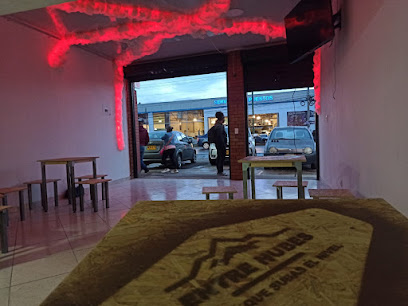
Distinto Cafe Bar
Discover the lively ambiance and unique drink offerings at Distinto Cafe Bar in Tunja, Boyacá, a must-visit for socializing and relaxation.

VIKINGOS PUB
Experience the vibrant nightlife of Tunja at VIKINGOS PUB, where local culture meets an energetic bar atmosphere.
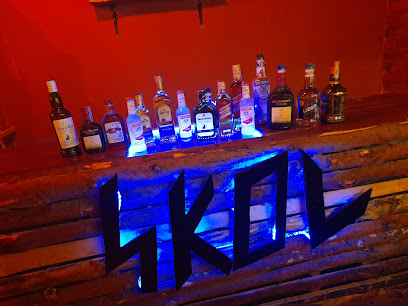
BEMBE TUNJA
Discover authentic Colombian flavors at BEMBE TUNJA, a premier grill restaurant in the heart of Tunja, offering a unique and vibrant dining experience.

LA HOLANDESA PUB
Discover the lively atmosphere of La Holandesa Pub in Tunja, where local flavors and vibrant nightlife come together for an unforgettable experience.

Van Gogh Drinks
Experience the vibrant ambiance of Van Gogh Drinks, where art meets lively socializing in the heart of Tunja.

city bar
Experience the vibrant nightlife at City Bar in Tunja, where friendly faces and delicious drinks await in a lively atmosphere.

Local Phrases
-
- HelloHola
[oh-lah] - GoodbyeAdiós
[ah-dee-ohs] - YesSí
[see] - NoNo
[noh] - Please/You're welcomePor favor/De nada
[por fah-vor/de nah-dah] - Thank youGracias
[grah-see-ahs] - Excuse me/SorryDisculpe/Lo siento
[dee-skool-peh/loh see-ehn-toh] - How are you?¿Cómo estás?
[koh-moh ehs-tahs] - Fine. And you?Bien. ¿Y tú?
[bee-ehn. ee too] - Do you speak English?¿Hablas inglés?
[ah-blahs een-glehs] - I don't understandNo entiendo
[noh ehn-tee-ehn-doh]
- HelloHola
-
- I'd like to see the menu, pleaseQuisiera ver el menú, por favor
[kee-syeh-rah behr ehl meh-noo, por fah-vor] - I don't eat meatNo como carne
[noh koh-moh kahr-neh] - Cheers!¡Salud!
[sah-lood] - I would like to pay, pleaseQuisiera pagar, por favor
[kee-syeh-rah pah-gar, por fah-vor]
- I'd like to see the menu, pleaseQuisiera ver el menú, por favor
-
- Help!¡Ayuda!
[ah-yoo-dah] - Go away!¡Vete!
[veh-teh] - Call the Police!¡Llame a la Policía!
[yah-meh ah lah poh-lee-see-ah] - Call a doctor!¡Llame a un doctor!
[yah-meh ah oon dohk-tohr] - I'm lostEstoy perdido
[ehs-toy pehr-dee-doh] - I'm illEstoy enfermo
[ehs-toy ehn-fehr-moh]
- Help!¡Ayuda!
-
- I'd like to buy...Quisiera comprar...
[kee-syeh-rah kohm-prahr...] - I'm just lookingSolo estoy mirando
[soh-loh ehs-toy mee-rahn-doh] - How much is it?¿Cuánto cuesta?
[kwahn-toh kwehs-tah] - That's too expensiveEso es muy caro
[eh-soh ehs moo-ee kah-roh] - Can you lower the price?¿Puede bajar el precio?
[pweh-deh bah-har ehl pree-syoh]
- I'd like to buy...Quisiera comprar...
-
- What time is it?¿Qué hora es?
[keh oh-rah ehs] - It's one o'clockEs la una
[ehs lah oo-nah] - Half past (10)Media (10)
[meh-dee-ah (diez)] - MorningMañana
[mah-nyah-nah] - AfternoonTarde
[tahr-deh] - EveningNoche
[noh-cheh] - YesterdayAyer
[ah-yehr] - TodayHoy
[oy] - TomorrowMañana
[mah-nyah-nah] - 1Uno
[oo-noh] - 2Dos
[dohs] - 3Tres
[trehs] - 4Cuatro
[kwah-troh] - 5Cinco
[seen-koh] - 6Seis
[says] - 7Siete
[syeh-teh] - 8Ocho
[oh-choh] - 9Nueve
[nweh-veh] - 10Diez
[dyehs]
- What time is it?¿Qué hora es?
-
- Where's a/the...?¿Dónde está...?
[dohn-deh ehs-tah] - What's the address?¿Cuál es la dirección?
[kwahl ehs lah dee-rehk-syohn] - Can you show me (on the map)?¿Puede mostrarme (en el mapa)?
[pweh-deh mohs-trar-meh (ehn ehl mah-pah)] - When's the next (bus)?¿Cuándo es el próximo (autobús)?
[kwan-doh ehs ehl prohk-see-moh (ow-toh-boos)] - A ticket (to ....)Un boleto (para ....)
[oon boh-leh-toh (pah-rah)]
- Where's a/the...?¿Dónde está...?
History of Tunja
-
Tunja was founded on August 6, 1539, by Captain Gonzalo Suárez Rendón. The city quickly became an important center during the Spanish colonial period due to its strategic location and fertile lands. The layout of the city reflects the typical Spanish colonial design, with a central plaza surrounded by administrative and religious buildings. The city served as a vital link between the interior of Colombia and the Caribbean coast.
-
Tunja played a significant role in Colombia's struggle for independence from Spanish rule. It was a stronghold for revolutionary leaders and hosted several key meetings, including the Congress of Tunja in 1816. The city's strategic location made it a crucial site for military campaigns, and it was a key stop on the route of Simón Bolívar's famous march to liberate New Granada.
-
Tunja boasts a rich cultural and architectural heritage that reflects its colonial past. The city is home to numerous historical buildings, including the Cathedral Basilica of St. James the Apostle, built between 1567 and 1574. Another notable site is the Puente de Boyacá, a bridge where the decisive Battle of Boyacá took place in 1819, marking the turning point in Colombia's independence movement. The city also hosts several colonial-era churches, monasteries, and well-preserved colonial houses.
-
The 20th century saw Tunja evolving into a modern city while preserving its historical legacy. The city became an educational and cultural hub, with the establishment of the Pedagogical and Technological University of Colombia in 1953. Tunja's historical sites and cultural events, such as the Holy Week celebrations, continue to draw visitors and scholars alike.
-
Today, Tunja is a vibrant city that seamlessly blends its rich history with modern amenities. It is known for its lively cultural scene, including festivals, museums, and theaters. The city's historical center remains a focal point for both locals and tourists, offering a glimpse into Colombia's colonial past while providing modern conveniences. Tunja continues to be an important cultural and educational center in the Boyacá Department.
Tunja Essentials
-
Tunja is located in the Boyacá Department of Colombia. The nearest major airport is El Dorado International Airport in Bogotá, approximately 150 kilometers away. From Bogotá, you can take a bus from the Terminal de Transporte de Bogotá to Tunja, which typically takes around 3 hours. Alternatively, you can rent a car in Bogotá and drive to Tunja, enjoying the scenic route through the Andes mountains.
-
Tunja is a relatively small city, and many of its attractions are within walking distance. For longer trips within the city, you can use taxis, which are readily available and relatively inexpensive. Public buses and colectivos (shared minibuses) operate within Tunja and connect to nearby towns and villages. Renting a bicycle is also an option for exploring the city at your own pace.
-
The official currency in Colombia is the Colombian Peso (COP). Credit cards are accepted in most hotels, restaurants, and shops in Tunja, but it is advisable to carry cash, especially in smaller establishments and rural areas. ATMs are widely available in the city, but make sure to inform your bank of your travel plans to avoid any issues with your cards.
-
Tunja is generally a safe city for tourists, but it is important to take standard precautions. Avoid walking alone at night in unfamiliar areas and keep an eye on your belongings in crowded places. Areas to be cautious of include the outskirts of the city and poorly lit streets at night. Petty crimes such as pickpocketing can occur, so remain vigilant.
-
In case of emergency, dial 123 for immediate assistance. Tunja has local police stations and medical facilities, including the Hospital San Rafael de Tunja. It is recommended to have travel insurance that covers medical emergencies. Pharmacies are available throughout the city for minor health issues and over-the-counter medications.
-
Fashion: Do dress modestly and comfortably, especially when visiting religious sites. Avoid wearing overly revealing clothing. Religion: Do respect local customs and traditions. Always be quiet and respectful in churches. Public Transport: Do be courteous and give up your seat to elderly passengers. Don’t eat or drink on public transport. Greetings: Do greet people with a handshake or a friendly 'Buenos Días'. Eating & Drinking: Do try local delicacies and accept food offerings graciously. Don’t refuse hospitality, as it is considered impolite.
-
To experience Tunja like a local, visit the Plaza de Bolívar, where you can observe daily life and purchase local crafts. Engage with locals at the markets, such as the Plaza de Mercado del Sur, where you can buy fresh produce and traditional Boyacá goods. Don’t miss the Paredón de los Mártires for a taste of local history, and try the regional cuisine, especially Boyacense arepas and almojábanas. For a unique experience, visit during the Aguinaldo Boyacense festival in December, which features parades, fireworks, and cultural events.
Trending Landmark in Tunja
-
Puente de Boyacá
-
Plaza de Bolivar, Tunja
-
Plazoleta de las Nieves (Plaza de los Muiscas)
-
Water well Hunzahua (Donato)
-
Parque Pinzon
-
Bosque De La República
-
Paramo Iguaque
-
Cathedral Basilica of St. James the Apostle
-
Los Hongos
-
San Agustin cloister
-
Casa del Fundador Gonzalo Suárez Rendón
-
Paredón de los Mártires
-
Casa del Escribano Don Juan de Vargas
-
Boyacá, Colombia
-
Glorieta del Gobernador
Nearby Cities to Tunja
-
Things To Do in Bogotá
-
Things To Do in Villavicencio
-
Things To Do in Ibagué
-
Things To Do in Manizales
-
Things To Do in Medellín
-
Things To Do in Pereira
-
Things To Do in Cúcuta
-
Things To Do in Armenia
-
Things To Do in Neiva
-
Things To Do in Cali
-
Things To Do in Sincelejo
-
Things To Do in Popayán
-
Things To Do in Cartagena
-
Things To Do in Barranquilla
-
Things To Do in Santa Marta












